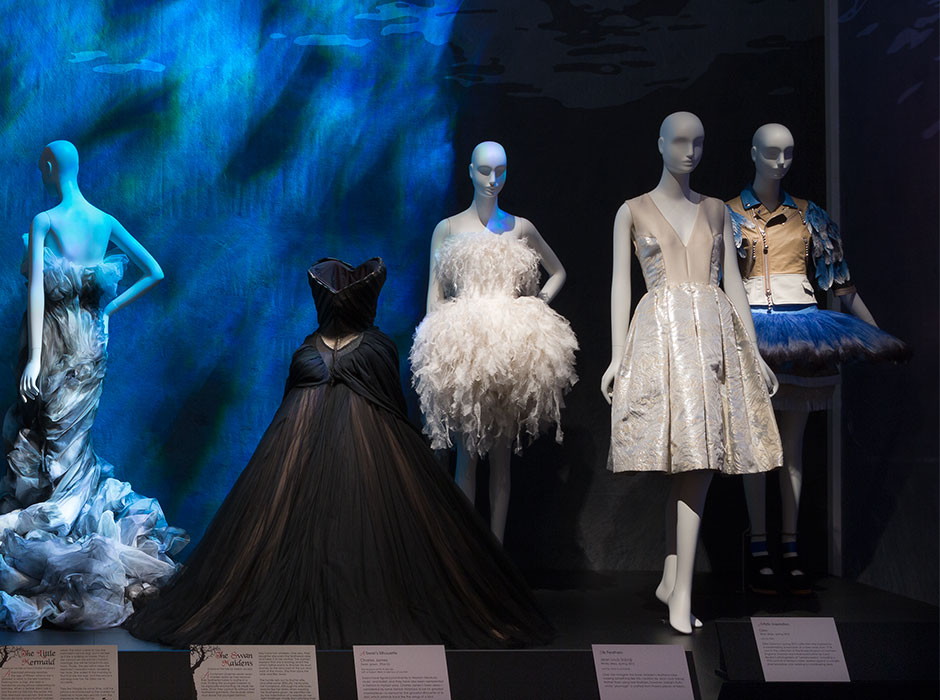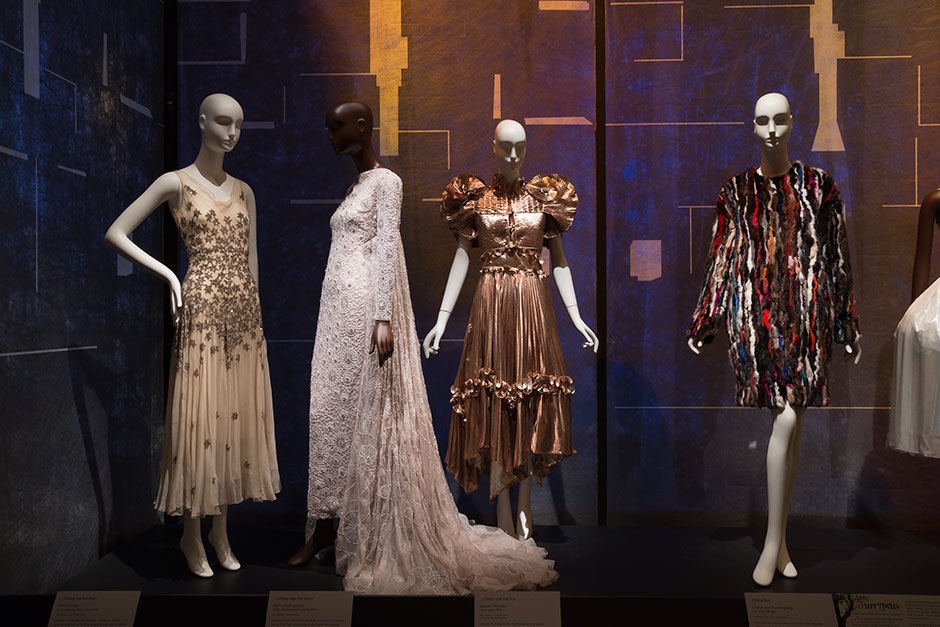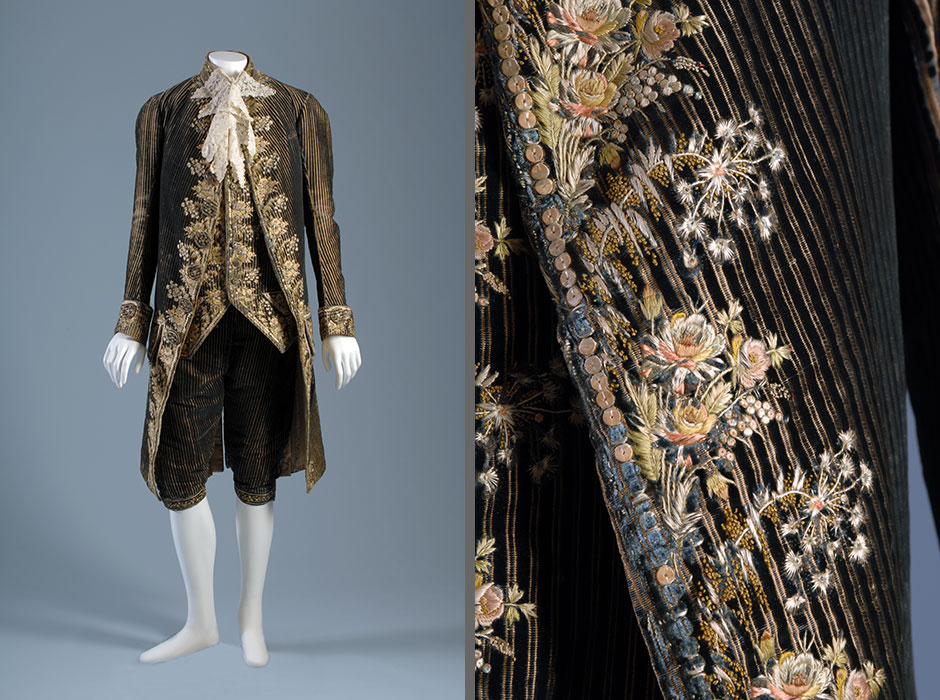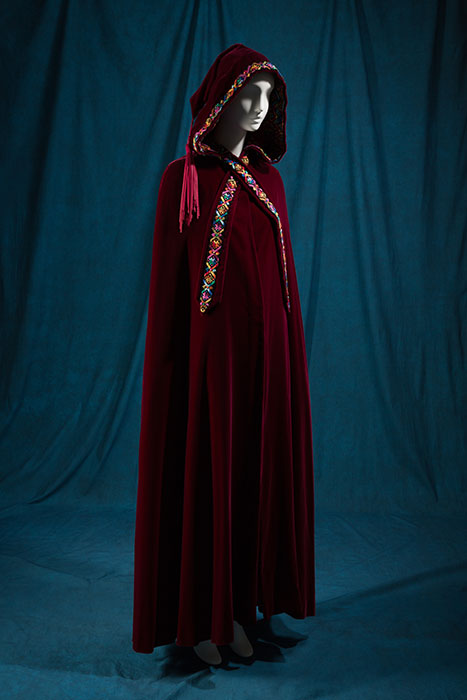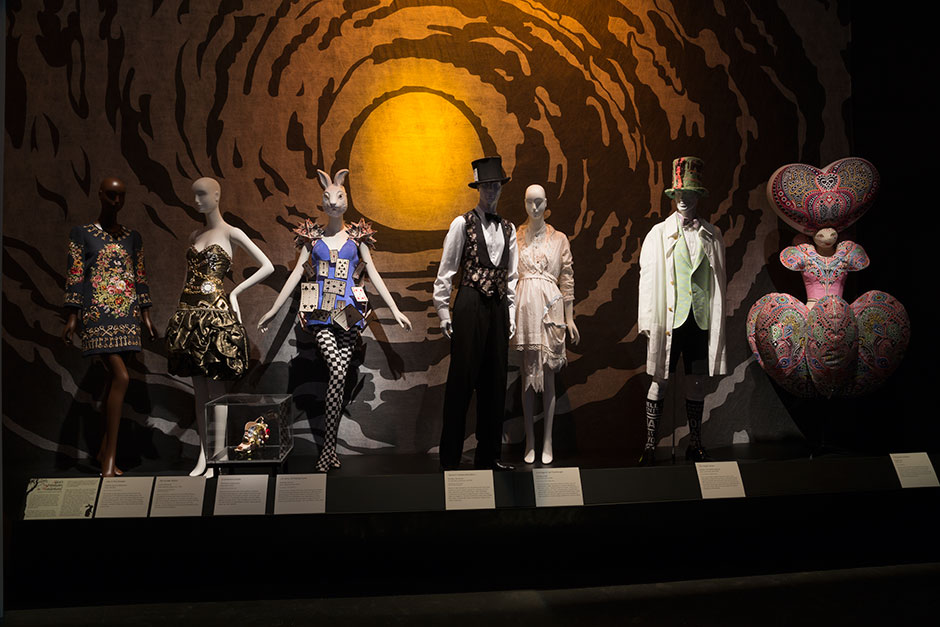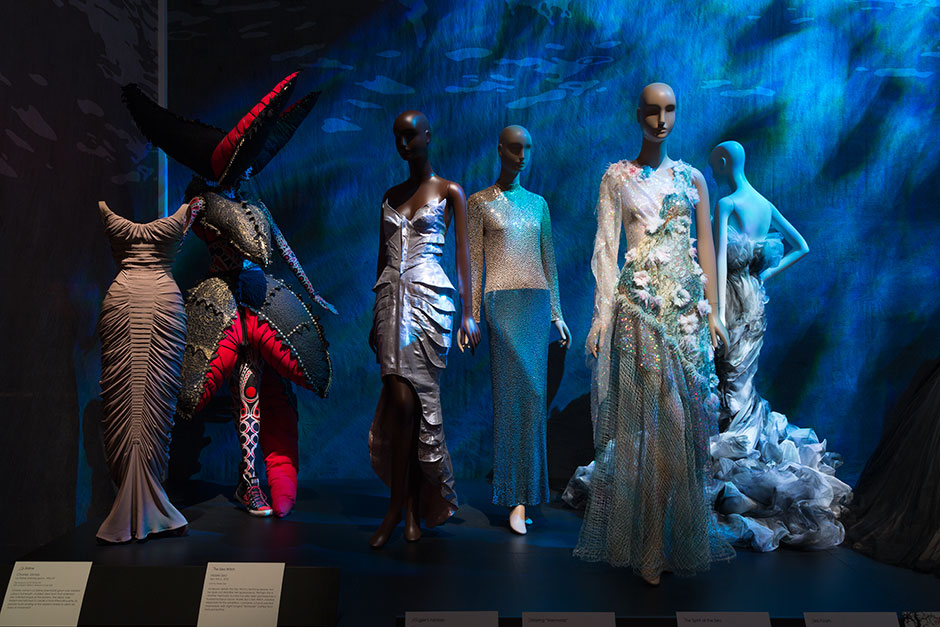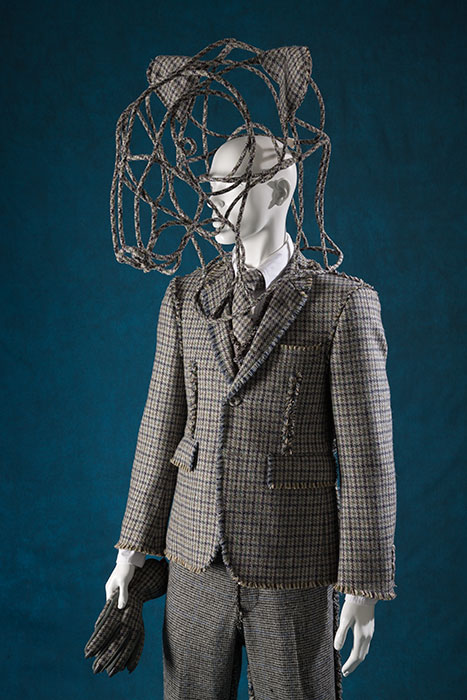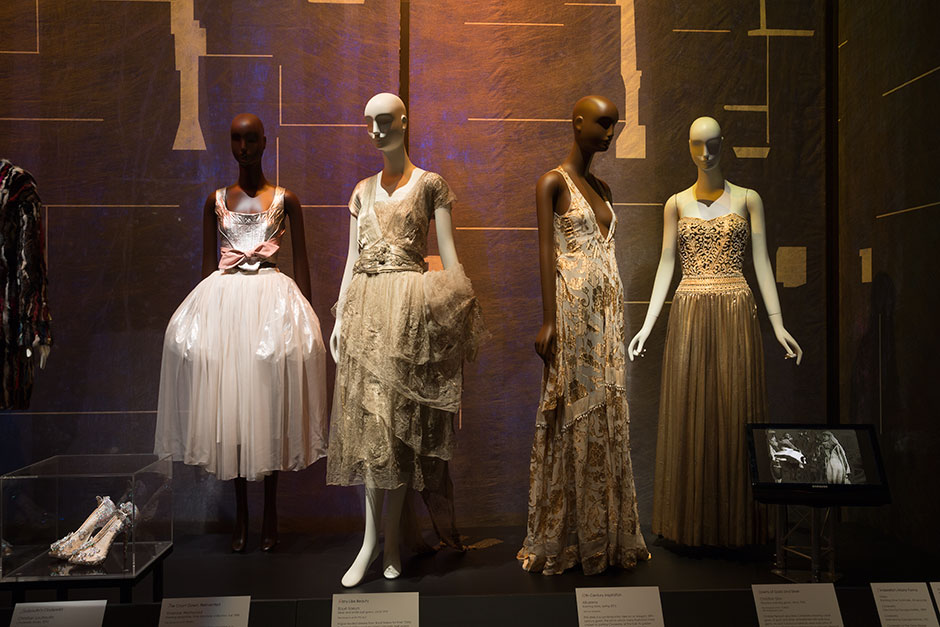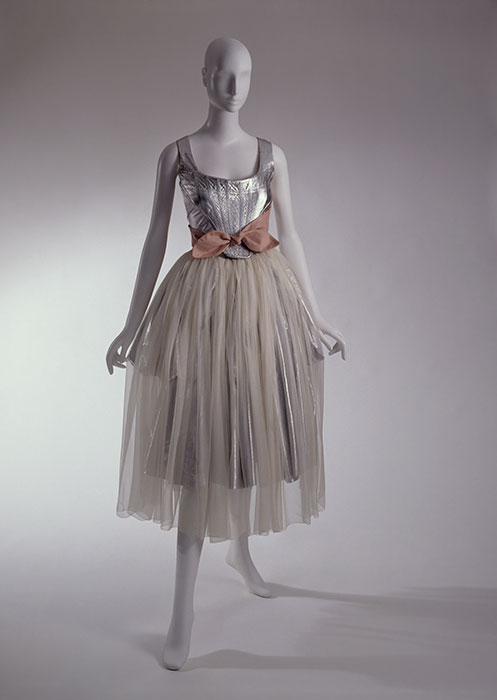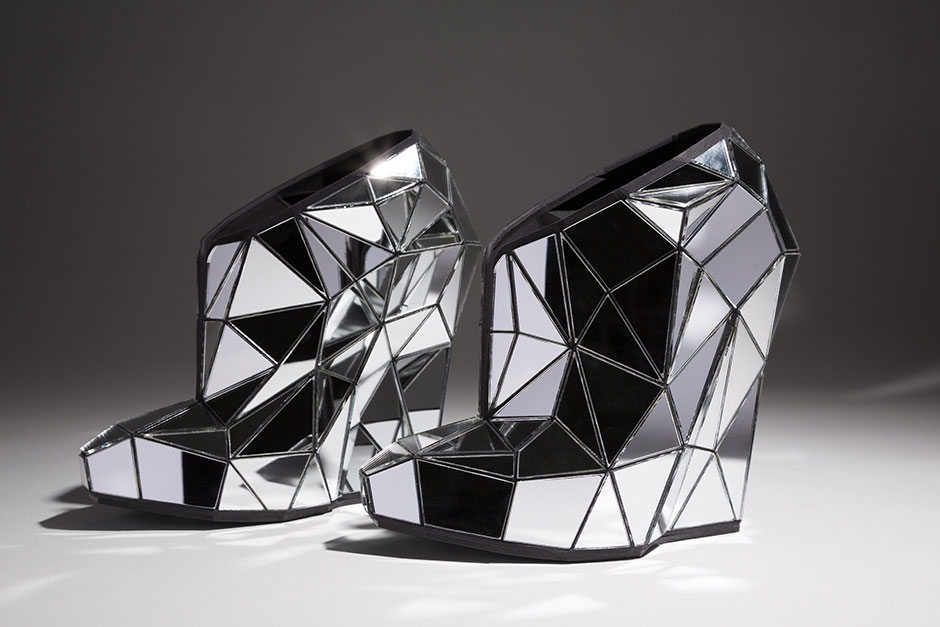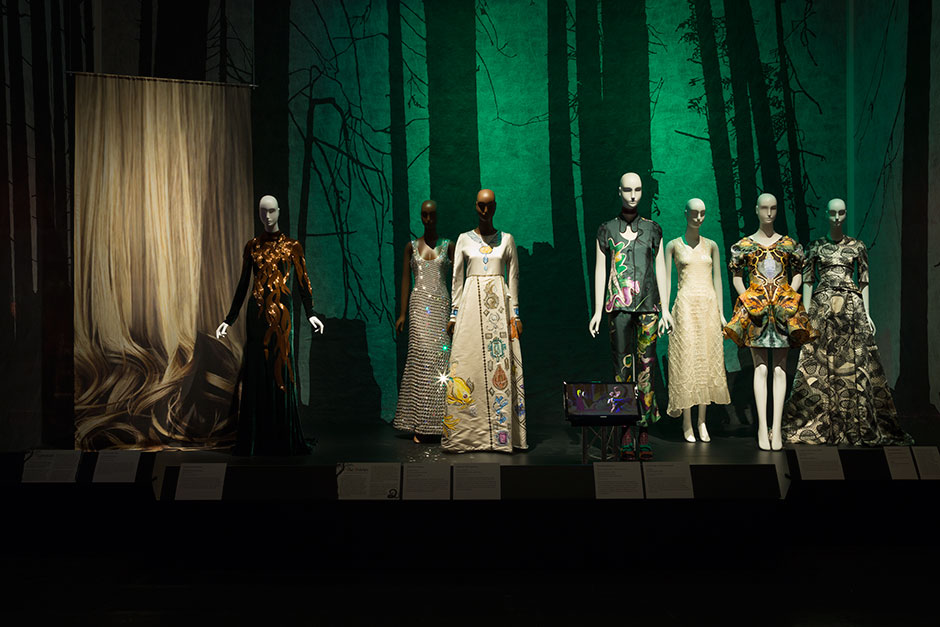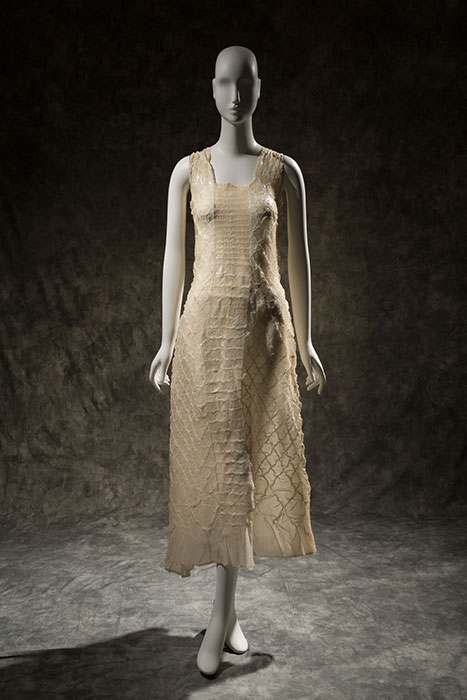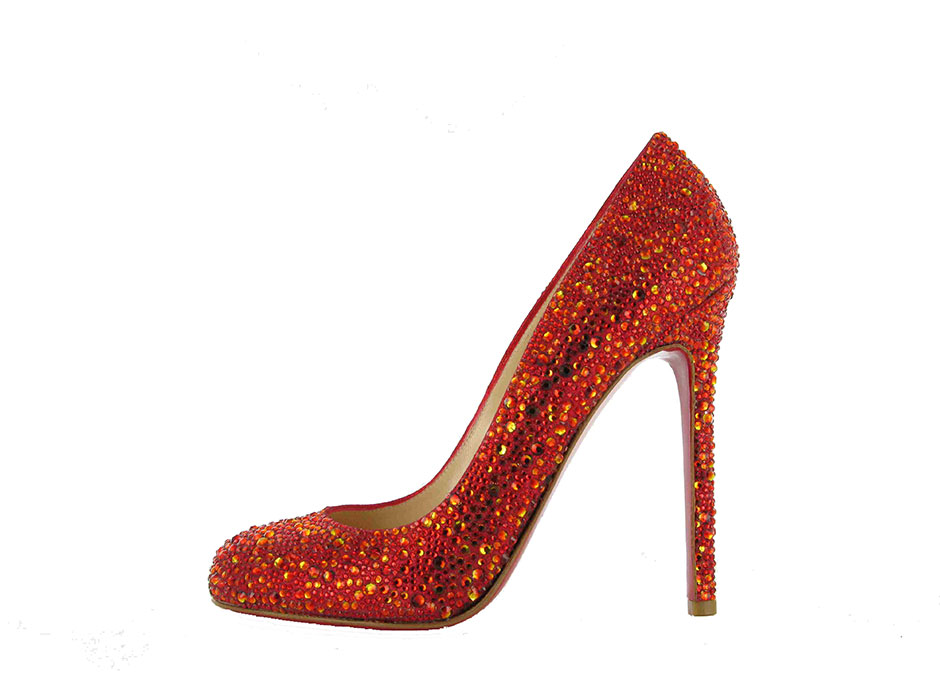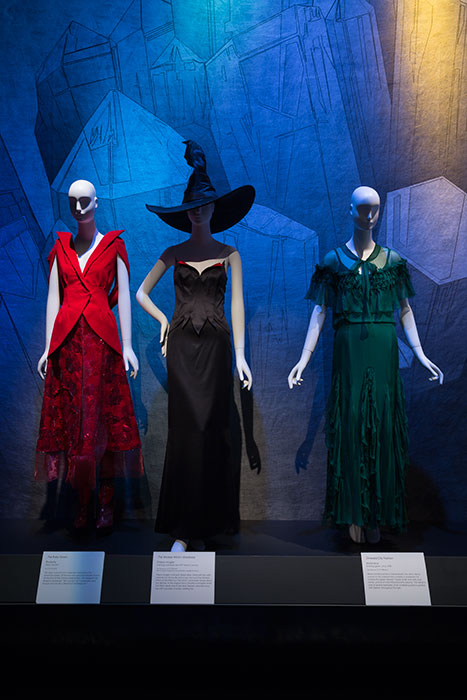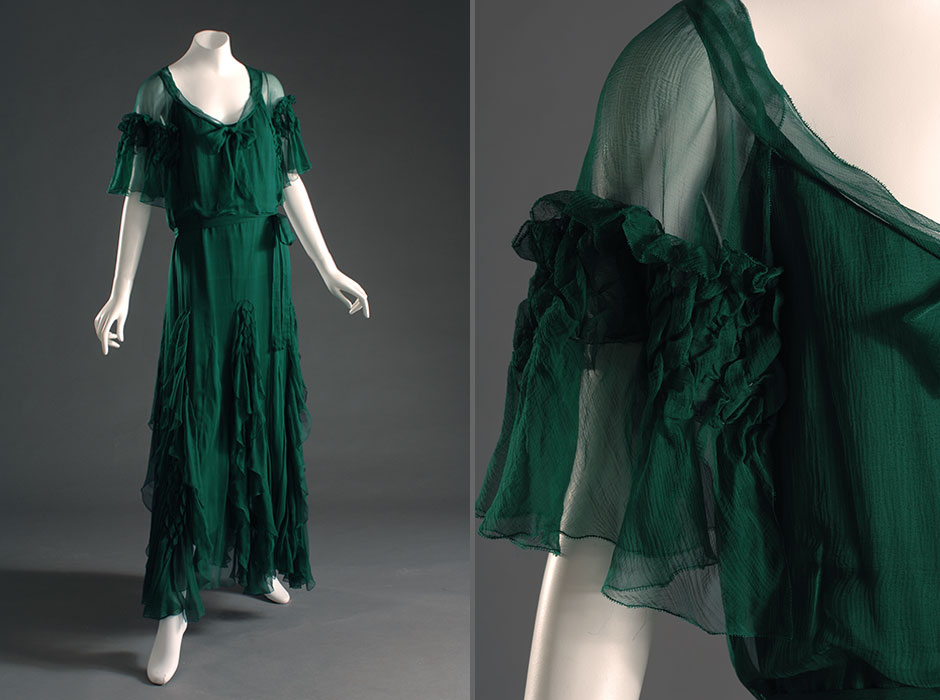The Swan Maidens
The Swan Maidens | based on the tale by Joseph Jacobs
A huntsman observes seven swan maiden sisters as they remove their feathered robes to bathe in a river. Finding the youngest maiden to be especially enchanting, he steals her robe. Since they cannot fly without their feathered garments, the six elder sisters must leave the youngest behind.
The huntsman tells the maiden that he has her robe, but he hides it from her. Without it, she must marry him. She settles into life with the huntsman, and they have two children. One day, their daughter discovers the feathered robe and takes it to her mother. The woman explains that she is leaving, and if the child’s father wants to find her, he must journey to the land east of the sun and west of the moon. She then dons the robe and flies away.
The hunter sets out to find his wife, and after some difficulty, he locates her homeland. Although his wife looks exactly like her sisters when wearing her feathered gown, he identifies her by the indentation of a needle on her right forefinger, made from stitching their children’s clothing. They return to the huntsman’s home and live happily ever after.
-
Image InfoClose
Installation view
-
Image InfoClose
A Swan’s Silhouette
Swans have figured prominently in Western literature, music, and ballet, and they have also been represented in fashion in myriad ways. Charles James’s Swan dress—considered by some fashion historians to be his greatest masterpiece—is named for the graceful silhouette of its skirt, which extends back like the wings of a bird.
Charles James Swan gown, 1954-55, 91.241.136, gift of Robert Wells in Memory of Lisa Kirk
-
Image InfoClose
Swan Lake
The level of detail on this Undercover ensemble is astounding, including “feathers” that were printed, painted, and laser-cut. The tutu-style skirt evokes the ballet “Swan Lake,” composed by Tchaikovsky in 1875. A composite of elements from several folktales, “Swan Lake” is itself sometimes regarded as a fairy tale.
Undercover ensemble, spring 2015, 2015.38.1
Sleeping Beauty
Sleeping Beauty | based on the tale by Charles Perrault
A king and queen invite all the fairies in the land to their beloved daughter’s christening. Each provides the princess with a fantastic gift, including beauty, a sweet temperament, and grace. Unfortunately, the king and queen neglect to invite one old and reclusive fairy. She comes to the party anyway, and furiously condemns the princess to death by the prick of a spindle. Another fairy manages to abate this curse so that the princess will only fall into a long sleep, to be awakened by a prince after 100 years.
Fifteen or sixteen years pass before the girl meets an elderly woman at a spinning wheel in a remote tower—a woman who had not heard the king’s decree to remove all spinning wheels and their spindles from the kingdom. The princess pricks her finger and falls asleep.
A century later, a prince awakens Sleeping Beauty. They are married and have two children, but their relationship is secret. The prince fears that his part-ogre mother will harm his wife and children. His deception is eventually uncovered, and the story ends with his mother falling into a vat of reptiles she had intended for Sleeping Beauty and the children.
-
Image InfoClose
Installation view
-
Image InfoClose
Romantic, Pastel Gowns
Charles Perrault includes some description of Sleeping Beauty’s opulent, fashionable living quarters in his text, such as jewel-encrusted flatware and gold and silver bed linens. Yet he does not describe Sleeping Beauty’s attire in detail. During her long sleep, she is often shown by illustrators to be wearing pale, flowing gowns with rich details that resemble this example by Marchesa.
Marchesa gown, spring 2012, lent by Marchesa
-
Image InfoClose
Sleeping Beauty’s Court
Fairy tales sometimes include intriguingly pragmatic details among their fantastical elements. In “Sleeping Beauty,” the good fairy ensures that the princess’s attendants are also put to sleep, so that when she wakes, she will be cared for. This intricately embellished, hooded ensemble is reminiscent of a medieval castle guard’s uniform.
Dolce and Gabbana dress and hood, fall 2014, lent by Dolce and Gabbana
Sinister Fairies (RIGHT)
“Sleeping Beauty” underscores that fairies can be both good and evil. While seven fairies bestow the infant princess with priceless gifts of grace and charm, another wickedly condemns her to an early death. This evening gown is printed with skeleton fairies that fly around a formidable-looking castle, portraying these mythic beings in an unmistakably sinister manner.
Alexander McQueen evening gown, 2007, 2015.77.2
Snow White
Snow White | based on the tale by the Brothers Grimm
A queen gives birth to a daughter with skin as white as snow, lips as red as blood, and hair as black as ebony. When the queen dies, the king marries a woman who is very beautiful but extremely vain. She owns a magic mirror that she consults to ensure she is the fairest in the land.
When Snow White is seven years old, the mirror warns the queen that the girl has become fairer than she. The queen commands a hunter to kill Snow White, but he leaves her in the forest, where she finds refuge in a cottage occupied by seven dwarfs. When the mirror reveals that Snow White is alive, the queen disguises herself and attempts to kill the girl three times. It appears she finally succeeds with a poisoned apple.
The dwarfs place Snow White in a glass coffin. A prince who passes by sees her inside, and begs the dwarfs to give him the coffin. As Snow White is carried away, the apple is dislodged from her throat. She awakens, and agrees to marry the prince. At their wedding, the stepmother is condemned to wear red-hot, iron slippers and dance to her death.
-
Image InfoClose
Installation view
-
Image InfoClose
Colorful Stay Laces
Snow White’s wicked stepmother first attempts to kill the girl by tempting her with colorful stay (corset) laces. Disguised as a peddler, the stepmother appeals to the girl by saying, “Oh, my child, what a sight you are! Come, let me lace you up properly.” She then pulls Snow White’s laces too tight, and the girl falls down as though she is dead.
Peter Soronen red corset dress, 2007, 2007.1.1, gift of Peter Soronen
-
Image InfoClose
White as Snow, Red as Blood, Black as Ebony
Snow White’s identifying colors—white, red, and black—are meaningful. According to the folklorist Cristina Bacchilega, the heroine embodies “the beauty and purity of white, the transformative powers of red or gold, the ritual—and sexual—death of black.” The use of dye on this Rodarte dress was inspired by the look of blood in water, lending it an ominous beauty.
Rodarte dress, fall 2008, 2008.55.1
-
Image InfoClose
The Glass Coffin
For her fall 2014 collection, Alice + Olivia designer Stacey Bendet showed fairy tale-inspired ensembles in what Marie Claire deemed a “mystical forest wonderland.” The model who wore this rhinestone-studded gown reclined in a glass coffin—an unmistakable nod to Snow White.
Alice + Olivia (Stacey Bendet) dress, fall 2014, 2015.91.1, gift of Alice + Olivia by Stacey Bendet
-
Image InfoClose
The Poisoned Comb
Snow White’s stepmother prepares a poisoned comb in her second attempt to kill her stepdaughter. The fashion journalist Alice Pfeiffer wrote that Rick Owens’s spring 2011 collection, accessorized with spiked combs, appeared “straight out of a dark fairy tale” and was “[s]eemingly inspired by Snow White’s wicked stepmother.”
Rick Owens ensemble, spring 2011, 2011.3.1, gift of Rick Owens
-
Image InfoClose
A Poisoned Apple
Abridged versions of “Snow White” often include only the apple, which puts the girl into her coma. The apple is described as “white with red cheeks,” mirroring Snow White’s own appearance and subtly underscoring her vanity. Judith Leiber’s glittering minaudière, covered with Austrian crystals, recalls this enticing fruit.
Judith Leiber minaudière bag, fall 2013, lent by Judith Leiber
Furrypelts
Furrypelts | based on the tale by the Brothers Grimm
A king’s beautiful wife falls gravely ill, and she asks him not to remarry anyone less lovely than she. When his daughter grows to look like her mother, the king decides he must wed her. The princess attempts to deter her father by making seemingly impossible demands. She asks for three dresses: one like the sun, another like the moon, and a third like the stars. She also requests a cloak made from the pelts of every animal in the kingdom.
The king presents the magnificent garments to his daughter, and announces that they will be married the following day. The princess flees into the forest, taking with her the three gowns and three golden trinkets. She wears the fur cloak, and covers her face and hands with soot.
The princess is discovered by a huntsman and taken to a castle in another kingdom. Concealing her beauty and nobility with her matted cloak, she is sent to work in the castle’s kitchen. She sneaks off to balls in her beautiful dresses and drops her golden trinkets into the second king’s soup, subtly making her presence known to him. He eventually discovers her identity, and they are married.
-
Image InfoClose
Installation view
-
Image InfoClose
A Dress like the Stars
The star carries myriad symbolic meanings across cultures, but two of its most widely known significations are those of guidance and destiny. In “Furrypelts,” the princess is wearing her starry dress when her identity is at last revealed to the king from another land. The star embellishments on this early 1930s gown are crafted from tiny beads and sequins.
Mary Liotta ivory evening dress, circa 1930, 78.237.10
-
Image InfoClose
A Dress Like the Sun
Dresses that dazzle like the heavens may seem impossible, but in some cultures, the sun is associated with gold, and the moon with silver. Gold and silver
cloths are linked to royal attire. This sunburst-pleated, gold lamé dress is a reinterpretation of English court costume, and was inspired by Diana Spencer’s wedding to Prince Charles in 1981.Zandra Rhodes gold dress, 1981, 91.158.1, gift of Mr. Bouke De Vries
Beauty and the Beast
Beauty and the Beast | based on the tale by Madame de Villeneuve
Beauty is one of the twelve children of a prosperous merchant. Quite suddenly, the merchant’s house is destroyed by fire, and he loses all of his ships. The family is forced into poverty.
The merchant learns that one ship has been found, and he sets out to retrieve its goods. Thinking that the family will again be wealthy, his children ask their father to bring back fine clothing and jewels. Beauty, however, requests only a rose.
When the merchant reaches town, the cargo is already gone. On his journey home, he stops to rest at a magnificent castle, where he picks a rose for Beauty—and is confronted by a hideous Beast. Furious over the stolen flower, the Beast demands that the merchant return with one of his daughters.
Beauty willingly goes to the castle. She is kind to the Beast, and he treats her well, even allowing her to return home for a two-month visit. After dreaming that the Beast is dying, Beauty hurries back to the castle. She finds the Beast very ill, and revives him. She then consents to marry him, breaking a terrible enchantment. He transforms back into a handsome prince.
-
Image InfoClose
Installation view
-
Image InfoClose
A “Beastly” Court Dress
Beauty would have likely worn an opulent court gown within the Beast’s royal castle. This example dates to circa 1755, the same time period in which the story of “Beauty and the Beast” was abridged and popularized. In addition to its design of flowers and feathers, it features a subtle, “beastly” motif of leopard spots.
Robe à la française, 1755-60, P82.27.1
-
Image InfoClose
The Noble Beast
The prince may be cursed to look like a beast, but he is still a nobleman. Many illustrations show him standing upright and dressed in lavish, fashionable clothing. One such image by Walter Crane portrays him in an embroidered court suit, similar to this example. The Beast’s fine attire reminds readers of his human origins.
Three-piece court suit, circa 1785, P83.19.10
-
Image InfoClose
Roses for Beauty
Beauty’s request for a single rose from her father’s journey is the catalyst for the tale of “Beauty and the Beast.” As a well-known symbol of love, the inclusion of the rose is especially significant to this story. Rodarte’s oversize, three-dimensional blooms are handcrafted from layers of organza.
Rodarte dress, spring 2007, 2007.13.1
Little Red Riding Hood
Little Red Riding Hood | based on the tale by Charles Perrault
Little Red Riding Hood is a pretty, charming young girl whose family members dote on her—particularly her grandmother, who fashions the girl a red cap. When her grandmother falls ill, Red Riding Hood is sent through the forest to deliver a basket of food to the elderly woman. On her way, she meets a wolf, who wishes to devour her. He asks the girl where she is headed, and she describes the location of her grandmother’s house. The wolf says that he would also like to visit her grandmother, and suggests that Red Riding Hood take one path while he takes another.
Red Riding Hood dawdles along her path, gathering nuts, running after butterflies, and making bouquets of flowers. The wolf, meanwhile, runs as fast as he can to the grandmother’s house, goes inside, and eats her. He waits in the grandmother’s bed for Red Riding Hood’s arrival. Disguising his voice, the wolf convinces Red Riding Hood to climb into bed with him, where he gobbles her up as well.
-
Image InfoClose
Installation view
-
Image InfoClose
Cap or Cloak?
Early written versions of “Little Red Riding Hood” often describe a cap or a hood, rather than a full garment. The familiar scarlet cloak with an attached hood seems to have been modeled after a style favored by English countrywomen during the late 18th and early 19th centuries.
Cloak, late 18th century, 2002.36.1
-
Image InfoClose
A Wolf in Grandmother’s Clothing
Little Red Riding Hood’s grandmother is sick in bed when the wolf enters her cottage and devours her. The wolf then disguises himself in grandmother’s clothing, usually depicted by illustrators as a loose-fitting, white nightdress with a high neck.
Nightdress, circa 1885, U.863
-
Image InfoClose
Fanciful and Folkloric
Red capes have long fallen out of common use, but they continue to influence high fashion. Giorgio di Sant’Angelo’s version features intricate, multicolored embroidery that underscores the fanciful and folkloric look of many early 1970s fashions—a style for which this designer was especially well known.
Giorgio di Sant’Angelo Cloak, circa 1970, 88.29.24, gift of Elizabeth Pickering Kaiser
-
Image InfoClose
Big Red Riding Hood
Rei Kawakubo took the red riding hood in a provocative new direction, designing an enormous, peaked headpiece in patent leather. Its size led to quips from the fashion media about a “Big Red Riding Hood.” This noteworthy design received even more attention when it was worn by Björk in the Spring 2015 issue of T magazine.
Comme des Garçons (Rei Kawakubo) Hooded ensemble, spring 2015, 2015.8.1
Alice’s Adventures in Wonderland
Alice’s Adventures in Wonderland | based on the tale by Lewis Carroll
One hot summer day, Alice is sitting by a riverbank when she notices a white rabbit rush past her. Muttering to himself, he checks a pocket watch that he pulls from his waistcoat. Alice is intrigued, and follows the rabbit into his hole, landing in a hallway lined with locked doors.
Thus begin Alice’s many adventures in Wonderland, where nothing is quite as it seems. Mysterious bottles of liquid, cakes, or mushrooms may cause one to shrink or grow, babies can transform into pigs, and flamingos may be employed as croquet mallets, all with the utmost unpredictability.
After encounters with a hookah-smoking caterpillar, a cat who fades to nothing but a grin, and a Hatter hosting a bizarre tea party—among many others—Alice finds herself in the presence of the Queen of Hearts. She is summoned to a trial for the Knave of Hearts, who is being prosecuted for theft of the Queen’s tarts. When Alice questions the King’s logic and is sentenced to a beheading, she upends the Queen’s army of playing cards. She then awakens quite suddenly, and tells her sister about her curious dream before going inside for tea.
-
Image InfoClose
Installation view
-
Image InfoClose
The Pocket Watch
Alice is not much alarmed that the White Rabbit is wearing clothing when she first sees him, but is astonished to see that he is carrying a pocket watch. The White Rabbit obsessively checks his watch, fretting that he will be late for an appointment with the Queen. Pocket watches have become essential to the Wonderland iconography.
Louis Féraud gold evening dress, circa 1989, 2014.63.6, gift of Anonymous
-
Image InfoClose
Wonderland Motifs
Nicholas Kirkwood’s Alice shoe stylishly combines numerous Wonderland motifs. These include the red roses favored by the Queen of Hearts, a tiny tea set in reference to the Hatter’s tea party, and the White Rabbit’s pocket watch. The checkerboard pattern on the heel references the Hatter’s suit as it was originally drawn by John Tenniel.
Nicholas Kirkwood Alice shoe, 2010, lent by Nicholas Kirkwood
-
Image InfoClose
An Army of Playing Cards
Manish Arora created this dress, referencing the Queen of Hearts and her playing card army, to celebrate the 2010 release of Tim Burton’s Alice in Wonderland film. Whereas the first authorized color illustrations of Alice showed her in yellow, the pervasive image of Alice in blue can be linked to Disney’s 1951 animation of the story.
Manish Arora dress, 2010 (remade 2015), 2015.10.1
-
Image InfoClose
Tenniel’s Timeless Illustrations
Many of John Tenniel’s iconic illustrations for Alice were based on Lewis Carroll’s preliminary drawings for the tale. After the book’s first printing in 1865, the British newspaper the Guardian reported that while Carroll’s tale was delightful, Tenniel’s illustrations were even better. The fabric used for this waistcoat features several of his Alice characters.
Audrey Buckner Go Ask Alice waistcoat, fall 1992, 93.62.1, gift of Audrey Buckner
-
Image InfoClose
The Queen of Hearts
Tenniel’s Queen of Hearts was inspired by renderings of queens on playing cards. Hideki Seo’s Heart takes a similar approach. Sculptural pieces of intricatelypatterned
vinyl are arranged to form a design in mirror image, resulting in a motif similar to those used on the backs of many playing cards.Hideki Seo, Heart, 2014, lent by Hideki Seo
The “Mad” Hatter (LEFT)
The “mad” Hatter’s erratic behavior in Alice may have been related to his profession. Hatmakers faced significant health risks during the 19th century, due to the chemicals used on the animal furs for felt hats. This ensemble, featuring a bold jacket and a painted foam top hat by artist Folker de Yong, evokes the original illustrations of the Hatter.
Walter Van Beirendonck man’s ensemble, spring 2013, lent by Walter Van Beirendonck
The Little Mermaid
The Little Mermaid | based on the tale by Hans Christian Andersen
A mermaid princess reaches the age of fifteen, when is she is allowed to swim to the sea’s surface. Peering into a ship, she sees a handsome young prince celebrating his birthday. When a terrible storm rolls in and the prince falls into the water, the Little Mermaid rescues him. She leaves him on dry land, and a human maiden comes along and wakes him.
Desperate to be with the prince, the Little Mermaid visits a terrifying sea witch. The witch is able to turn the mermaid’s tail into legs, but it will feel as if she is walking on knives. Then, if she cannot win the prince’s hand in marriage, she will be turned into sea foam. Finally, the sea witch takes the Mermaid’s beautiful voice, rendering her mute. She wakes in the morning to find that she has legs, and the prince is standing over her. He takes her to his castle.
They live happily for some time, until the prince is re-introduced to the maiden he believes to have rescued him from the shipwreck. He asks for her hand in marriage. The Little Mermaid must accept her fate, and she dissolves into sea foam.
-
Image InfoClose
Installation view
-
Image InfoClose
Mugler’s Fantasy
This two-piece “mermaid” dress, with its precise, figure-enhancing tucks of fabric, underscores Thierry Mugler’s ability to combine fantasy with adept craftsmanship. In 1988, Mugler created a “fairy tale kingdom” for the presentation of a collection devoted to the lost city of Atlantis. Mermaids, sea nymphs, sharks, and starfish graced the catwalk.
Thierry Mugler two-piece evening gown, spring 1989, 2011.13.1
-
Image InfoClose
La Sirène
Charles James’s La Sirène (Mermaid) gown was created using a full-length, molded dress form that widened into a fishtail shape at the bottom. The fabric was folded and stitched to create a form-fitted silhouette, its precise tucks ending at the wearer’s knees to allow for ease of movement.
Charles James La Sirène evening gown, 1956-57, 91.241.131, gift of Robert Wells in Memory of Lisa Kirk
-
Image InfoClose
Installation view
-
Image InfoClose
Glittering “Mermaids”
Norman Norell began making his slinky, sequined “mermaid” dresses as early as 1949, and continued to make variations on the style over the course of his career. Fashion writer Bernadine Morris considered them some of Norell’s most spectacular designs, stressing that they “made everyone who wore them glow like a mermaid.”
Norman Norrell sequined “Mermaid” evening gown, circa 1972, P86.43.3
-
Image InfoClose
The Spirit of the Sea
Kate and Laura Mulleavy of Rodarte explained that their spring 2015 collection was “inspired by tide pools and the ocean: its undulating and delicate textures and colors . . . it seemed fitting to have a series of dresses that were inspired by the fantasy of mermaids, as they poetically capture the spirit of the sea.”
Rodarte blue and green gown, spring 2015, 2015.35.1
Snow White and Rose Red
Snow White and Rose Red | based on the tale by the Brothers Grimm
Snow White and Rose Red are kind, cheerful sisters who live with their mother in a little cottage. One night, a large black bear knocks on their door, and asks to come into the cottage to warm up. The girls quickly befriend him, and he stays with them until spring. When he leaves, he says that his treasures, hidden in the woods, must be protected from dwarfs.
The sisters soon encounter a dwarf whose long beard is caught on a tree trunk in the woods. The sisters free him, and he grabs a sack of gold and leaves without thanking them. They later rescue the dwarf from two more predicaments, and each time he insults them before making off with a sack of gems. They finally find the dwarf standing before a heap of jewels. When he begins to shout at them, the bear appears and strikes the dwarf dead with his paw.
The bear sheds his skin and reveals that he is handsome prince. He explains that the dwarf stole his treasures and transformed him into a wild bear, an enchantment broken only by the dwarf’s death. Snow White ends up marrying the prince, and Rose Red marries his brother.
-
Image InfoClose
Installation view
-
Image InfoClose
The Bear Prince
“Snow White and Rose Red” demonstrates that we should not judge based on appearances. Although he looks frightening, the prince-cum-bear becomes the sisters’ cherished friend. Stephen Jones’s ingenious bear-shaped headpiece was one of a group of hats inspired by wild animals, all of which were paired with Thom Browne suits in traditional menswear fabrics.
Thom Browne man’s suit, fall 2014, lent by Thom Browne
-
Image InfoClose
Snow White
Snow White and Rose Red have an unusually amiable relationship for fairy tale sisters. The scholar Jack Zipes notes, “The girls, not unlike the Brothers Grimm, are like night and day but are inseparable and supportive of one another.” Their differing personalities are represented physically: illustrations often show Snow White as a blonde, dressed in white, and her sister as a brunette, dressed in red.
Dolce and Gabbana evening gown, 2012, 2013.4.1, gift of Bergdorf Goodman
-
Image InfoClose
Rose Red
Rose Red and Snow White were named for the rose bushes that grow in their mother’s garden. Although Rose Red is sweet-natured, she is more spirited than her sister, preferring to “frolic in the fields” instead of doing chores. The tailored precision of this ensemble is tempered by the unrestrained quality of the appliquéd roses.
Thom Browne woman’s ensemble, fall 2013, lent by Thom Browne
-
Image InfoClose
Installation view
-
Image InfoClose
Installation view
Cinderella
Cinderella | based on the tale by Charles Perrault
Beautiful, sweet-tempered Cinderella lives with her stepmother and two stepsisters, who treat her like their maid. When the local prince announces that he is hosting a ball, Cinderella’s ragged clothing precludes her from attending, but she patiently helps her stepsisters prepare for the event.
On the night of the ball, Cinderella’s godmother visits her. She taps Cinderella’s rags with her wand, transforming them into a magnificent gown. Cinderella is also given glass slippers, but she is warned that she must leave the ball before midnight. The prince is completely smitten with Cinderella, and invites her to also attend his festivities the following evening. Cinderella is once again dressed by her godmother, but in her haste to return home on time, she loses one of her glass slippers.
The prince wants to find and marry the girl who can wear the tiny shoe. His courtiers arrive at Cinderella’s house, and her stepsisters try, and fail, to fit into the slipper. Cinderella’s foot fits the shoe perfectly, and she pulls its mate from her pocket. She and the prince are married several days later.
-
Image InfoClose
Installation view
-
Image InfoClose
Sant’Angelo’s Cinderella
Giorgio di Sant’Angelo entitled his 1971 collection The Summer of Jane and Cinderella. “Cinderella” was represented by a variety of looks made of shredded and frayed chiffon. Purportedly, Sant’Angelo decided to slash the printed chiffon only the evening before his fashion show.
Giorgio di Sant’Angelo dress, The Summer of Jane and Cinderella collection, 1971, 91.254.25, gift of Ms. Lena Horne
-
Image InfoClose
Impossible Slippers
The intricate form of Noritaka Tatehana’s Cinderella shoe is 3D-printed from acrylic, thus taking the idea of the glass slipper in a contemporary, avant-garde direction. While the resin material is sturdy, the shoe’s towering, heel-less silhouette makes it appear as fragile—and as challenging to wear—as a slipper made from glass.
Noritaka Tatehana Glass Slipper, 2014, lent by Noritaka Tatehana
-
Image InfoClose
Magical and Mischievous Spirit
London-based designer Giles Deacon consistently creates imaginative garments with a fairy tale feel. Several dresses from his fall 2012 collection were made from fabrics that were distressed to look as though they were scorched. Vogue noted that Deacon’s clothes “burned with a magical and mischievous spirit.”
Giles dress, fall 2012, lent by Giles (right)
-
Image InfoClose
A Grey Smock
This “rag” dress is made from sheer fabric coated with white film, torn by hand to create fringe. Heat was then applied to the dress, resulting in a crimped and uneven texture. Its singed appearance and ashy palette recalls the worn, grey smock described in some versions of “Cinderella.”
Yoshiki Hishinuma dress, fall 2000, 2001.52.5, gift of Hishinuma Associates Co., Ltd.
-
Image InfoClose
Riches to Rags
Shelley Fox took a blowtorch to this sequined skirt, in certain spots reducing the fabric to mere threads. Fox’s work is reminiscent of the charred, degraded state of Cinderella’s clothing after she is put to work as a housemaid.
Shelley Fox blouse and skirt, fall 2000, 2008.1.1
-
Image InfoClose
The Court Gown, Reinvented
Vivienne Westwood’s metallic silver ensemble is a contemporary take on an 18th-century court gown. In Steven Guarnaccia’s storybook, Cinderella: A Fashionable
Tale, Cinderella decides on this dress to wear to the ball. Westwood’s imaginative designs are frequently described as having a fairy-tale quality.Vivienne Westwood evening ensemble, Time Machine collection, fall 1988, P89.60.1
The Snow Queen + The Red Shoes
The Snow Queen | based on the tale by Hans Christian Andersen
A demon creates a mirror that magnifies bad things, while shrinking and distorting good things. When the mirror is accidentally dropped, it shatters into billions of pieces. Some of these fragments become lodged in the heart and eye of a boy named Kay. He turns from nice to nasty, a change that confuses his best friend, Gerda. One afternoon, while Kay is in the town square, his sled becomes hitched to another, larger sled. Its driver is the Snow Queen, who endears herself to him and takes him away with her.
Distraught over Kay’s disappearance, Gerda begins a long journey to find him. She encounters many people and animals that guide her before finally arriving at the Snow Queen’s vast, icy castle. When Gerda finds Kay, he does not respond to her arrival, and she begins to cry. Her tears fall upon his breast, penetrating to his heart and melting a bit of the mirror. Kay then bursts into tears, washing the grain of glass from his eye. He is released from the Snow Queen’s hold, and he and Gerda return home.
-
Image InfoClose
Installation view
-
Image InfoClose
Pristine White Furs
The Snow Queen is evil but beautiful, similar to Snow White’s wicked stepmother. When she kidnaps Kay, she wears an ensemble made from pristine white furs. This is indicative of her desire for perfection, evident throughout the tale, and also of her queenly status. White furs are unmistakably luxurious.
J. Mendel (Gilles Mendel) hooded cape, 2011, and evening dress, 2008, lent by J. Mendel
-
Image InfoClose
Pristine White Furs
Jean Paul Gaultier two-piece evening ensemble, fall 2002, 2009.16.27, gift of Mrs. Martin D. Gruss
-
Image InfoClose
Symmetrical Snowflakes
Snowflakes are linked to what the scholar Erica Weitzman refers to as the “frigid mathematical perfection” of the Snow Queen’s world. The cascade of symmetrical snowflakes on this dress would have pleased the Snow Queen—but while Andersen describes her wearing a gown of snowy white gauze, black netting lends this example a more menacing quality.
Alexander McQueen evening dress, fall 2008, 2010.61.1
-
Image InfoClose
Invisible Shoes
The psychologist William J. Fry writes that mirrors have long been prized objects, “suggested by the extensive and elaborate decorations applied to them, and by the decorative uses made of them.” Such uses extend to fashion, but the mirrored surface of these shoes is more than ornamental—it blends in with the wearer’s surroundings.
Andreia Chaves Invisible shoes, 2011, 2013.47.1
-
Image InfoClose
The Red Shoes | based on the story by Hans Christian Andersen
A young, impoverished girl named Karen is adopted by a rich old woman. Karen develops a fascination with shoes—particularly red shoes, which she sees worn by a little princess. She tricks the old woman, who has poor eyesight, into buying her a pair of shiny red shoes that were originally intended for an earl’s daughter. Karen wears the shoes to her first communion, knowing that they are inappropriate for the occasion. She later wears the shoes to a ball, leaving behind her benefactor, who is gravely ill.
Karen soon discovers that she cannot stop dancing, nor can she remove the shoes. She dances uncontrollably, day and night, until she finds herself at the doorway of an executioner. He chops off her feet, and the shoes dance away into the forest. Karen, who now walks with wooden legs and crutches, repents, and she is eventually welcomed back into the church. Upon her death, her soul rises to heaven.
-
Image InfoClose
The Red Shoes
Andersen specifically describes a pair of shoes made from red Morocco leather, a supple material that was often used for footwear during the 19th century. Prior to the mid-century development of chemical dyes, it was difficult to color leather in shades of red. These shoes, therefore, would have been a valuable commodity.
Morocco leather shoes, circa 1800-1810, 2015.34.1
Rapunzel + The Fairies
The Fairies | based on the tale by Charles Perrault
A widow lives with her two daughters, one of whom is as disagreeable and unattractive as the other is sweet-natured and beautiful. The sweet daughter is fetching water from a nearby spring when a poor woman approaches her and asks for a jug of water. The kind girl readily assists. The woman then reveals that she is a fairy in disguise, and bestows upon the girl a strange and marvelous gift: each time she speaks, flowers and gems will fall from her lips.
The girl’s mother is thrilled by the valuable present. She sends Fanchon, her mean daughter, to the spring so that she will receive the same reward. This time, however, the fairy disguises herself as a magnificently dressed lady, and Fanchon denies the woman’s request for water. The fairy curses Fanchon so that each time she speaks, snakes and toads fall from her mouth.
When Fanchon returns home, her sister is blamed for her curse. The kind girl runs into the forest, where she meets a prince who wants to marry her. Fanchon is driven from the house by her mother, and she eventually dies in the forest.
-
Image InfoClose
Installation view
-
Image InfoClose
The Gift of Jewels
The consideration of dowries—which often included clothing—was of great importance during Perrault’s time. In “The Fairies,” the prince contemplates the extraordinary value of the kind sister’s gift of jewels, and that influences his decision to marry her. One can imagine the finery that she might have worn, such as this gown, covered in approximately 10,000 Swarovski crystals.
Armani Privé silver evening gown, fall 2007, 2008.67.1, gift of Giorgio Armani
-
Image InfoClose
What Does a Fairy Look Like?
The Fairy disguises herself as a peasant and then as a rich woman, but her everyday appearance is never described. Fairies have been portrayed in countless ways—both physically and temperamentally—in literature and artwork. Miuccia Prada’s spring 2008 collection featured illustrations by the renowned artist James Jean, whose fairies were simultaneously beautiful and sinister.
Prada ensemble, spring 2008, 2008.45.1, gift of Prada
-
Image InfoClose
Cursed by Snakes and Toads
Whereas the kind sister in “The Fairies” can be imagined wearing beautiful, jewel-encrusted clothing, the mean sister’s wardrobe might reference the snakes and toads that curse her. Yoshiki Hishinuma’s sheath dress was made from sheer white polyester that was coated and heat-processed, resulting in a flaking, snakeskin-like texture.
Yoshiki Hishinuma dress, 2001, 2001.52.2, gift of Hishinuma Associates Co., Ltd.
-
Image InfoClose
Sartorial Snakes
Snakes are feared for their sly, venomous nature, but they also possess positive
associations of strength and rejuvenation. The beauty of snakeskin–either real or fabricated—has long made it an alluring material for fashion. Alexander McQueen’s reptile pattern is engineered to follow the silhouette of the dress, while the coiling snakes of Giles’s print elegantly coincide with his gown’s curving shapes.Alexander McQueen dress, Plato’s Atlantis collection, spring 2010, 2012.36.2
-
Image InfoClose
Rapunzel | based on the tale by the Brothers Grimm
A man steals some leafy rapunzel plant from an enchantress’s garden for his pregnant wife. He is caught, and the enchantress demands that his child be promised to her as payment.
A passing prince, captivated by Rapunzel’s singing, learns how to access the tower. The two soon fall in love. After Rapunzel carelessly reveals her relationship with the prince, the enchantress lops off the girl’s hair and banishes her to the forest. Thinking he will never see Rapunzel again, the prince jumps from the tower. He lives, but is blinded by thorny brambles.
Years later, the prince is wandering through the forest when he again hears Rapunzel singing. He finds her living with their twin children. Rapunzel’s tears of joy fall into his eyes, and his blindness is cured. The family returns to his kingdom.
Rapunzel grows up to be exceptionally beautiful, with long hair like spun gold. The enchantress locks her in a tower, which has neither stairs nor a door, in the middle of a forest. When the enchantress wants to pay her a visit, Rapunzel lets her braids down through the window for the woman to climb.
-
Image InfoClose
Hair and Witchcraft
This evening gown by Alexander McQueen, densely embellished with a cascade of beaded golden tresses, was part of a collection inspired by witches. This reference underscores the power associated with hair—especially blonde hair—in folklore and mythology. When Rapunzel’s long hair is shorn, she loses her most valuable asset.
Alexander McQueen dress, fall 2007, 2013.2.1
The Wonderful Wizard of Oz
The Wonderful Wizard of Oz | based on the story by L. Frank Baum
Dorothy’s Kansas farmhouse is caught up in a tornado while she is inside. It eventually lands in a place called Munchkinland, where Dorothy learns that it has crushed the Wicked Witch of the East. She is given the Witch’s silver slippers.
Dorothy wants to return to Kansas, and is told that she should follow a yellow brick path to get to the Emerald City. The Wizard of Oz, who rules the city, can help her. Along her journey, she encounters a scarecrow, a tin woodman, and a lion. They are also hoping for assistance from the Wizard, and they travel with Dorothy.
The Wizard says he will help them if they kill the Wicked Witch of the West. The group sets out to find her, and though the Witch tries to harm them, Dorothy eventually defeats her. The group returns to the Emerald City.
The Wizard tells Dorothy she can return to Kansas in a hot air balloon. When the balloon floats away without her, she learns she can use the silver shoes to carry her anywhere if she knocks her heels together three times. Dorothy does so, and she flies back to Kansas.
-
Image InfoClose
Installation view
-
Image InfoClose
Red Soles
Dorothy’s ruby slippers were made from fashionable, late 1930s pumps adorned with sequins and rhinestones. A modern-day Dorothy would undoubtedly prefer shoes by Christian Louboutin, whose signature red soles are recognized around the world. Intriguingly, Dorothy’s onscreen shoes also had red soles, as another color would have been distracting.
Christian Louboutin Lady Lynch stilettos, fall 2009, lent by Christian Louboutin
-
Image InfoClose
Ruby Slippers
It is difficult to look at a pair of glittering red shoes without recalling The Wizard of Oz. Even these heelless shoes acquire a Dorothy-like flair when covered in crimson crystals. Yet in the original story, Dorothy’s shoes are silver. The ruby slippers were devised in order to capitalize on the use of Technicolor in Metro-Goldwyn-Mayer’s 1939 movie.
Noritaka Tatehana Crystal Rose shoes, 2014, 2014.52.1, gift of Noritaka Tatehana
-
Image InfoClose
The Ruby Gown
This dress was part of a collection inspired by the American plains. Of the two red, sequined dresses shown at the end of the runway presentation, the designers for Rodarte explained, “We couldn’t go to Nebraska and Kansas and not do a Wizard of Oz reference.”
Rodarte dress, fall 2011, lent by Rodarte
-
Image InfoClose
Emerald City Fashion
When Dorothy arrives in the Emerald City, she is led to a room in Oz’s palace that contains a wardrobe full of beautiful green dresses “made of silk and satin and
velvet, and all of them fitted Dorothy exactly.” This detail is one of several examples of an underlying preoccupation with fashion throughout the tale.Molyneux evening gown, circa 1930, P86.66.5
-
Image InfoClose
The Wicked Witch’s Wardrobe
Thierry Mugler’s vampish black dress, lined with red satin, extends into flame-like forms over the bust. The Wicked Witch of the West is a “fire witch,” and water brings about her demise. In the original story, Dorothy is enraged when the Witch steals one of her silver slippers, and drenches her with a bucket of water, melting her.
Thierry Mugler evening ensemble, fall 1997 Haute Couture, 2004.49.1, gift of Clarins Fragrance Group/Thierry Mugler Perfume
-
Image InfoClose
Adrian’s Gingham Dresses
The beloved 1939 film version of The Wizard of Oz featured costumes by Gilbert Adrian, including Dorothy’s iconic gingham dress. This humble cotton fabric embodied a sense of Americana, and the designer used a similar material in his high-end fashion collections during the World War II era.
Adrian dress, circa 1942, 71.248.1, gift of Mrs. Karl J. Bea
-
Image InfoClose
From Cornfield to Catwalk
Dorothy changes into a blue-and-white gingham frock before she begins her journey to Oz. This is meaningful: blue is the color of the Munchkins, and white the color of good witches. While the fabric chosen for this Altuzarra dress may bring to mind Dorothy’s attire, its provocative cut ensures that it is no prairie style.
Altuzarra dress, spring 2015, lent by Altuzarra















